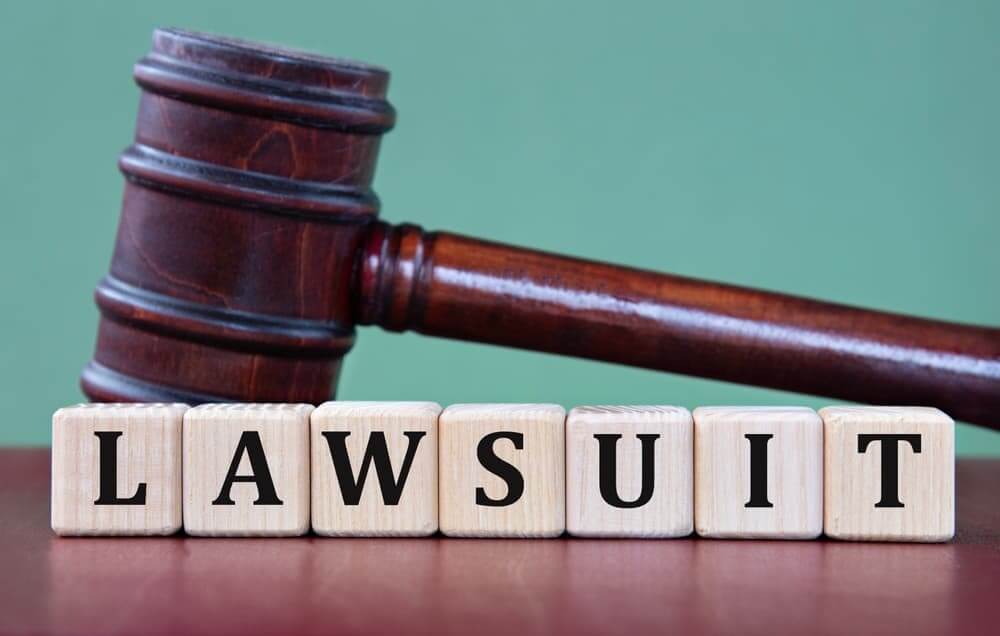If you are wondering whether you can sue for an old injury, it is important to understand that each case is unique and may have different legal considerations. While the statute of limitations for personal injury cases varies by state, meaning there is a time limit for filing a lawsuit, there may be exceptions in certain situations, such as discovering the injury later or if the injury was caused by a continuing harm.
It can be frustrating and overwhelming to handle the legal process, especially when dealing with an old injury, so it is important to seek the advice of a personal injury attorney. They can evaluate the specific details of your case, determine if you have a valid claim, and guide you through the legal process.
Contacting a personal injury attorney near you will help you get the information and guidance you need to make an informed decision about your potential legal options. You can speak with the personal injury lawyer during the course of a free initial consultation, where they will learn more about your case. Here, the personal injury attorney may explain whether you still have the right to file a lawsuit. Not only is the initial consultation free, but you also do not have to pay any money to the personal injury lawyer unless you receive money for your own injuries. Thus, you shoulder no financial burden when you seek to get help from a personal injury attorney.
Understanding the Statute of Limitations
 The statute of limitations is a legal principle that sets a time frame within which a lawsuit must be filed. This time limit varies depending on the type of case and the jurisdiction. For personal injury cases, including those involving old injuries, the statute of limitations typically starts from the date of the injury or from the date the injury was discovered. There is a chance that your injury that you may feel is old will still fall under the statute of limitations and allow you to sue. Allow your personal injury lawyer to review your case and determine whether you still have the ability to file your lawsuit.
The statute of limitations is a legal principle that sets a time frame within which a lawsuit must be filed. This time limit varies depending on the type of case and the jurisdiction. For personal injury cases, including those involving old injuries, the statute of limitations typically starts from the date of the injury or from the date the injury was discovered. There is a chance that your injury that you may feel is old will still fall under the statute of limitations and allow you to sue. Allow your personal injury lawyer to review your case and determine whether you still have the ability to file your lawsuit.
The purpose of the statute of limitations is to ensure that legal cases are resolved in a timely manner. It gives potential plaintiffs a reasonable period to bring their claims while also protecting defendants from facing lawsuits for incidents that may have occurred long ago, when evidence may be difficult to obtain or memories may have faded. The law aims to be fair to the defendant, ensuring that they will not have to defend against a lawsuit many years after the fact when they may not have their own evidence, which can be used to counter your claims.
It is essential to be aware of the statute of limitations that applies to your case, as failing to file within the specified timeframe may result in the dismissal of your claim. Your lawsuit will not even make it past the initial stages to the merits of the case if you miss the statute of limitations.
However, it is important to note that there are exceptions that may allow you to sue for an old injury, even if the statute of limitations has expired. Nonetheless, there are only a handful of exceptions, and they are strictly construed. You are the one who has the burden of proof to show that the statute of limitations applies to your case, and it is not always easy to prove.
The Discovery Rule: Suing After Delayed Injury Symptoms
In some cases, it may take time for the symptoms of an injury to become apparent. This delayed discovery of an injury can complicate matters when it comes to the statute of limitations. Fortunately, many jurisdictions have what is known as the “discovery rule,” which allows plaintiffs to file a lawsuit within a specified period after the injury is discovered or should have been reasonably discovered.
However, some states that employ the discovery rule as part of their statute of limitations may also put a cap on the overall amount of time that you have to sue. For example, the statute of limitations in a state can be two years, and under no circumstances (including the discovery rule) will you be allowed to file a lawsuit more than five years after the accident.
For example, let’s say you were involved in a car accident ten years ago, but you only recently started experiencing severe back pain as a result of that accident. Under the discovery rule, you may still have a valid claim, as the statute of limitations will likely begin from the time you discovered or reasonably should have discovered your back injury. The discovery rule does not allow you to sit back and do nothing in the face of obvious symptoms of your injury. In this example, if you were feeling back pain for the ten years since the car accident, and it only recently became severe, you will likely be charged with knowledge of your injury at a much earlier time.
However, it is important to consult with a personal injury attorney as soon as possible to determine if the discovery rule applies to your specific situation. They can assess the details of your case and provide guidance on whether you can still pursue a claim for your old injury.
Pre-Existing Conditions and Personal Injury Lawsuits
Another factor that can complicate personal injury lawsuits involving old injuries is the presence of pre-existing conditions. A pre-existing condition refers to a health condition or injury that existed prior to the incident for which you are seeking compensation. You can expect the insurance company to closely comb through your medical records to see what your health was like before your present injury. They may try to avoid paying compensation for your injury, claiming you were already hurt at the time of the accident.
If you have a pre-existing condition that is aggravated or exacerbated by a new injury, you may still have a valid claim. The fact that you may have already had a predisposition to a certain injury does not mean that the responsible party can escape liability for it. There is a rule called the “eggshell plaintiff doctrine,” which essentially means that the responsible party takes the accident victim as they find them. The responsible party will be obligated to pay for the victim’s full injuries, even if their prior condition meant that they were more badly hurt. However, it can be challenging to prove that the defendant’s actions directly caused your worsened condition. This is where the experience of a personal injury attorney becomes invaluable.
An experienced attorney will carefully review your medical records, consult with medical experts, and gather evidence to establish a clear link between the defendant’s actions and your aggravated condition. They will also work to ensure that any compensation you seek reflects the impact that the aggravation of your pre-existing condition has had on your life.
Exceptions That May Allow You to Sue for an Old Injury
 While the statute of limitations generally provides a strict timeframe within which a lawsuit must be filed, there are exceptions that can extend this timeframe for certain situations. These exceptions may allow you to sue for an old injury, even if the standard statute of limitations has expired.
While the statute of limitations generally provides a strict timeframe within which a lawsuit must be filed, there are exceptions that can extend this timeframe for certain situations. These exceptions may allow you to sue for an old injury, even if the standard statute of limitations has expired.
One such exception is the “continuing harm” rule. In cases where the effects of an injury are ongoing, the statute of limitations may be tolled or paused until the harm has ceased or the harmful activity has stopped. For example, if you were exposed to toxic chemicals that resulted in a long-term health condition, the statute of limitations may not begin until the exposure ended, or until you were diagnosed with the resulting condition.
Additionally, some states have specific laws that extend the statute of limitations for certain types of injuries or victims. For instance, statutes of limitations may be extended for cases involving minors or individuals with disabilities who may have difficulty pursuing legal action within the standard timeframe.
It is essential to consult with a personal injury attorney who is well-versed in the laws of your jurisdiction to determine if any exceptions apply to your case. They will have the knowledge and experience to handle these complexities and help you understand your rights and legal options.
Proving an Old Injury Claim
When pursuing a personal injury lawsuit for an old injury, it is vital to gather and preserve evidence that supports your claim. This evidence may include medical records, witness statements, accident reports, expert opinions, and any other relevant documentation.
To prove your claim, you will need to establish the following elements:
- Duty of care: Show that the defendant owed you a duty of care, meaning they had a legal obligation to act reasonably and responsibly to prevent harm.
- Breach of duty: Demonstrate that the defendant breached their duty of care by acting negligently, recklessly, or intentionally.
- Causation: Prove that the defendant’s breach of duty directly caused your injury.
- Damages: Show that you suffered actual damages, such as medical expenses, lost income, pain and suffering, or emotional distress, as a result of the injury.
Proving these elements can be challenging, especially for old injuries where evidence may be harder to obtain. Causation may be the particular element that could give you problems in a personal injury lawsuit. When your injury is old, it may be more difficult to tie your condition to the responsible party’s actions. Your personal injury attorney may work with medical experts to argue that your condition was the result of this particular accident. The expert witness may also explain why you may not have experienced symptoms of this injury earlier, when missing the statute of limitations is an issue in your case.
How Long After My Injury Should I Contact a Personal Injury Lawyer
 If you suspect that you may have a valid claim for an old injury, it is important to consult with a personal injury lawyer as soon as possible. Time is of the essence in personal injury cases, as evidence can disappear, memories can fade, and the statute of limitations may expire.
If you suspect that you may have a valid claim for an old injury, it is important to consult with a personal injury lawyer as soon as possible. Time is of the essence in personal injury cases, as evidence can disappear, memories can fade, and the statute of limitations may expire.
By contacting a personal injury attorney near you promptly, you can ensure that your case is evaluated promptly and determine the appropriate course of action. Even if you are unsure about the viability of your claim or whether the statute of limitations has expired, an attorney can provide valuable guidance and help you understand your legal rights and options. They can assess the specific details of your case, advise you on the best course of action, and provide the legal representation you need. The statutes of limitations and exceptions vary by state, and an attorney in your jurisdiction will be familiar with the specific laws that apply to your case.
Do not draw any assumptions on your own that you may not qualify for compensation. You should always take your case to a personal injury lawyer. The initial consultation is always free. The personal injury lawyer will review your situation and let you know whether you have a potential cause of action. If the lawyer tells you that you have missed the statute of limitations, you have lost nothing but some time.
An experienced personal injury attorney will review the details of your case, assess the relevant laws and statutes of limitations, and provide you with an informed opinion on whether you have a valid claim. They will guide you through the legal process, negotiate with insurance companies on your behalf, and fight to ensure you receive fair compensation for your injuries and damages.
Call A Personal Injury Lawyer Today
Remember, time is a critical factor when dealing with old injury cases, so do not hesitate to reach out to a personal injury attorney near you for a consultation. They will be your advocate, helping you handle the challenges of the legal system and working to secure the compensation you deserve.
